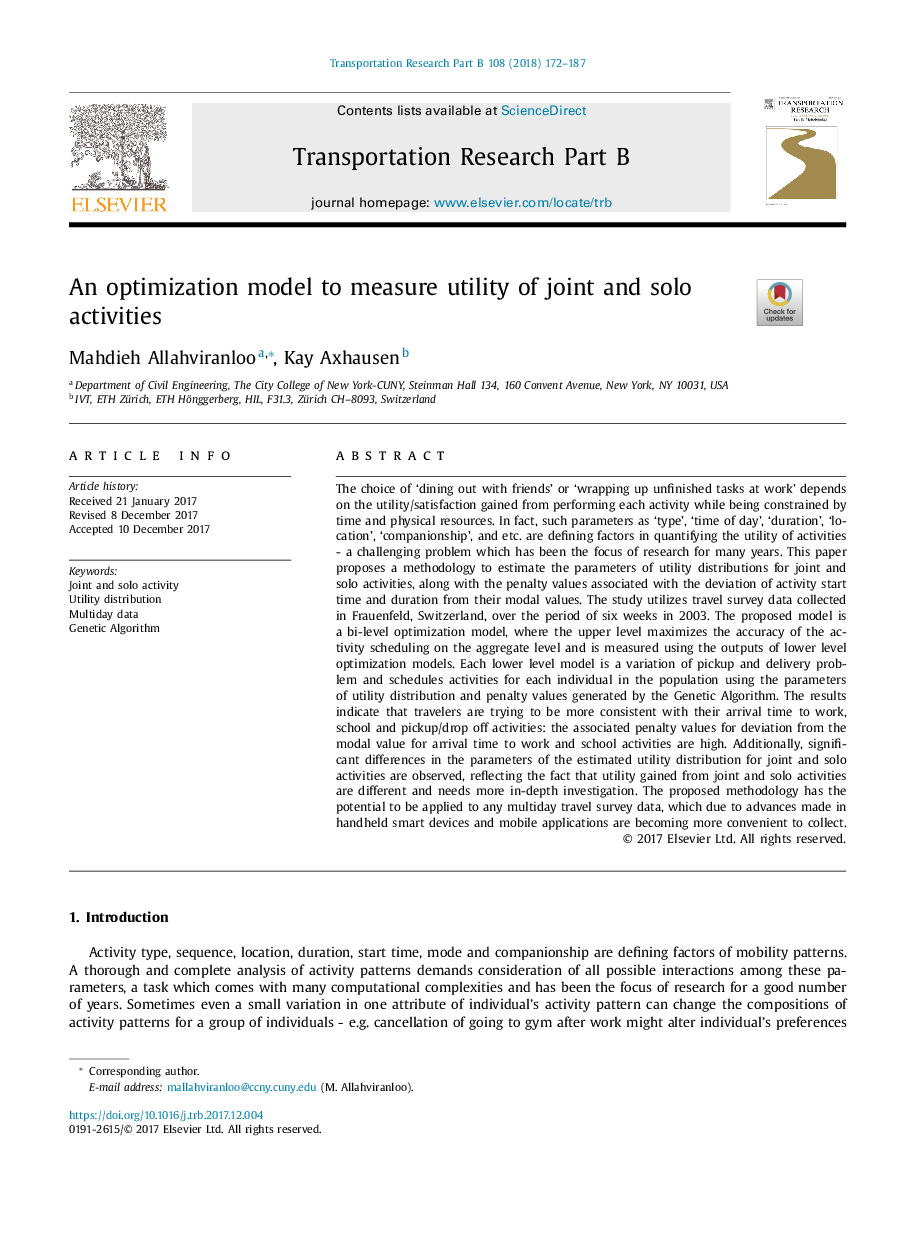ترجمه فارسی عنوان مقاله
یک مدل بهینه سازی برای سنجش کاربرد فعالیت های مشترک و انفرادی
عنوان انگلیسی
An optimization model to measure utility of joint and solo activities
| کد مقاله | سال انتشار | تعداد صفحات مقاله انگلیسی |
|---|---|---|
| 108620 | 2018 | 16 صفحه PDF |
منبع

Publisher : Elsevier - Science Direct (الزویر - ساینس دایرکت)
Journal : Transportation Research Part B: Methodological, Volume 108, February 2018, Pages 172-187
ترجمه کلمات کلیدی
فعالیت مشترک و انفرادی، توزیع سودمند، داده های چند روزه الگوریتم ژنتیک،
کلمات کلیدی انگلیسی
Joint and solo activity; Utility distribution; Multiday data; Genetic Algorithm;

